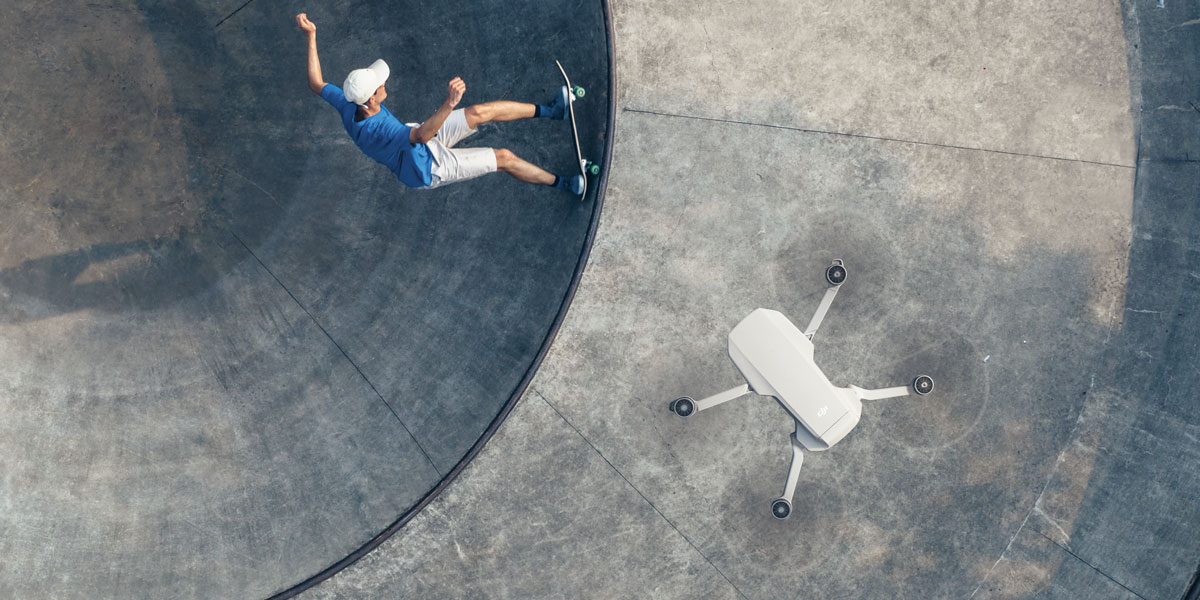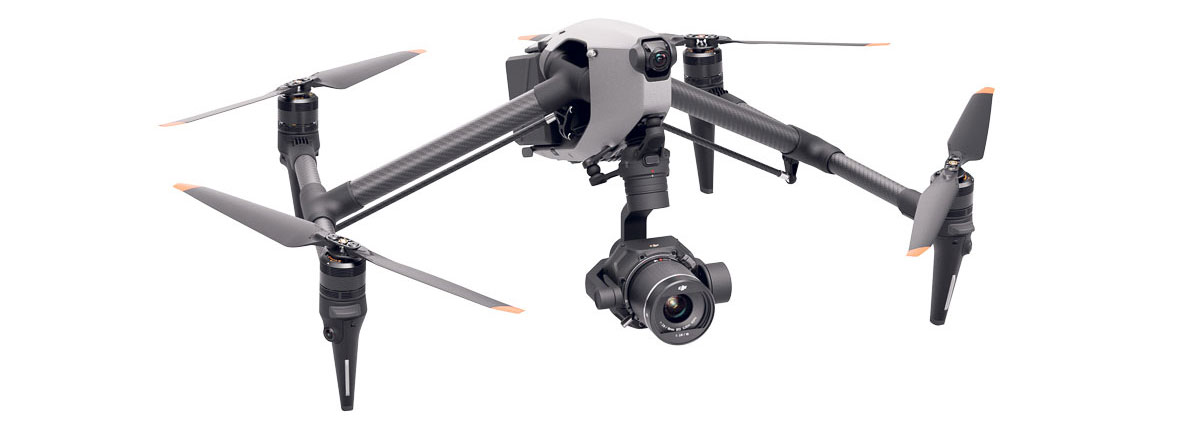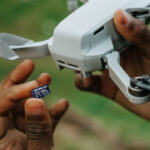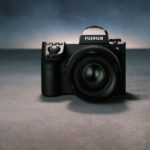
Making Movies: Working an angle
Posted on Aug 31, 2023
Whether you’re capturing B roll on a drone or action camera, shooting from on high, down low or POV, finding creative angles can add real pizzazz to your filmmaking
Words by Adam Duckworth
Seeking to transform your videos into something slick and polished? Then shooting additional footage from alternative angles can work wonders. Typically called B roll, as it’s from a second camera and is in addition to your main A roll content, this is where you can really go wild and try out striking shots that add significantly to the production values of your piece. As well as providing extra footage to help with the edit, you can alter the pace, help establish the subject or simply conjure up something seriously dramatic.
Study well-shot TV dramas and movies and you’ll see an astonishing number of shots from overhead and up high, or from unusual angles where a camera normally wouldn’t fit. For example, in the front of a car facing the driver, or sharing the point of view of a skydiver jumping out of an aeroplane.
And while mounting a large camera to the outside of a racing car or renting a helicopter to track the movement of a motorcycle may still be methods employed by big-budget shows, it’s much easier for the rest of us to achieve similar results via affordable yet high-quality accessories and specialist cameras.

The view from on high
A top-down, bird’s-eye view is a well-used visual angle in film and TV drama. To achieve this, we could invest in a long boom arm or pole cam, but nowadays by far the most common way to get the shot from above is via drone. Once, these would have cost tens of thousands, required an expensive camera bolted on, plus extensive pilot training and pricey insurance. But it’s far cheaper and more accessible now.
When it comes to drones, DJI is the clear market leader. Its latest Mini 2 SE is a palm-sized device weighing a mere 249g and exempt from many drone regulations. Its 1/2.3-inch CMOS sensor records video at 2.7K and delivers 12-megapixel photos. It supports up to 6.2 miles of HD video transmission, with a flight time of 31 minutes. However, UK rules say we have to maintain line of sight with our drone at all times, so the quoted long range is purely academic.
The gimbal has a three-axis mechanical stabilisation system, while the camera features a 4x digital zoom and is controlled via smartphone app. At a wind speed of 24mph, the £339 Mini is still able to hover and deliver stable footage. Other drone brands to look out for include Parrot, 4DRC and Potensic.
For those wanting a starter drone to achieve establishing shots, a sub-250g unit should fit the bill. But all camera drones need registering with the Civil Aviation Authority, which costs £10.33 per year. Your operator ID number needs to be displayed on your drone – and you can’t fly over crowds, but can fly over friends and those involved with a shoot.
If you’re after something with a better camera that can fly faster and operate in higher wind speeds, then a bigger and more powerful drone is required. And that means, even if it’s just for personal fun, you need to get an operator ID and also a flyer ID from the CAA. Plus, if you are operating a first-person view (FPV) drone using goggles, you have to have an observer with you in order to watch out for anything dangerous that might be missed because you’re wearing goggles.
To get a flyer ID, you need to take an online test. Many companies offer training to get you ready, although you can study online if you would prefer. However, even once passed, there are limitations. You can’t fly over crowds, within 50m of groups of people or within 150m of buildings. You also have to re-take the test every five years, but you can employ more capable drones.
At the high end, DJI’s Inspire 3 drone records full-frame 8K, making it ideal for film production. It has an integrated camera with a 161° ultra-wide field of view, night vision and the latest transmission and control system, but costs from £13,419.
Alternatively, an excellent mid-range choice is the £1879 DJI Mavic Pro 3. This has a 4/3 CMOS Hasselblad camera, dual lenses, a 43-minute flight time and obstacle-avoidance sensors.
Most commercially bought drones are classified in the ‘open’ category for aircraft under 25kg, for flying lower than 400ft and maintaining a constant line of sight. If you want to go beyond these limits, you need to move up to a full GVC certification, which takes a lot more time, expense and training. If your drone is less than 20kg, you don’t need insurance unless you are using it commercially.
As we can see, the rules are a little complex and changing all the time. However, falling foul of the law is not advised. Besides, once you’ve done the studying and mastered flying, drones will repay your investment by delivering incredible shots.
To make life easier for us, many drones can provide subject tracking. So, if your subject is riding a bicycle, for example, the drone will follow at the distance and height you set. Flashier still are settings such as ‘rocket’, where the drone will begin from wherever you fly it to then shoot up to reveal the location – great for an establishing shot. For a different kind of ‘reveal’ shot, the drone can even be set to fly in upward spirals.
Alternatively, it can do an orbit of the subject at any height. Yes, all these moves can be achieved manually via the drone joysticks, but it’s far easier for beginners to select one of the auto modes and let the software do its magic.
Of course, the drone doesn’t have to be moving, or at a great height. Let it hover above a scene to provide a top-down view, then have subjects enter and possibly exit the frame. Or reveal a new part of the scene by keeping the height the same and moving the drone in a straight line. Hovering just above the ground, or just a few metres high, gives a great dolly shot that can be used to zoom into a scene. Or, try tracking alongside subjects walking, running or cycling. With a drone, we have a camera that can pretty much be moved wherever we want.
More advanced drones still allow for the selection of aperture, frame rate, shutter speed, ISO – and even use Log gamma settings to provide maximum dynamic range.

The thick of the action
Drones aside, the dramatic footage that’s only achievable via a small action camera can add something special to your video. Whether it’s helmet-cam footage from an extreme sportsperson, an establishing shot from a tight location where it would be impractical to mount a big camera, an underwater shot, a second camera angle for a quick cutaway, or something more creative still, a small action camera has fast become a must-have.
With GoPro both forming and dominating the market, we’ve seen an explosion in affordable cameras. Some are cheap and nasty, little more than toys for posting holiday footage on Facebook. But many offer pro quality complete with vibration reduction, which is more important than consumer-level add-ons and AI editing. GoPro also sets the standard for mounts and accessories that many others have adopted.
So, which model should we go for? The latest £400 GoPro Hero11 Black has a larger sensor than any previous model, shooting 5.3K/60p as well as 4K/120p, and has incredible stabilisation. Or, for £300, you can buy the Hero11 Black Mini, which offers much of the same spec but is smaller and lighter, as well as being easier to use. Both offer 10-bit colour in 4K from 27.6-megapixel sensors. The Mini does not have a front screen, though.
As well as conquering the drone sector, DJI is making waves in the action camera market, too. Its £269 Action 2 uses a modular design with a magnetic attachment. It’s small, offers 4K/120p and a super-wide point of view.
However, its latest £309 Osmo Action 3 has returned to a more recognisable action camera shape. It has dual touchscreens, shoots in 4K/120p, has an extended battery life and protection against cold weather – all of which makes it perfect for winter sports.
But for something more professional still, take a look at the Sony RX0 II, an update of the original model released back in 2017. It’s a mini production camera that might not offer all the consumer-friendly features of the latest action cams, but aces them all with its pro-video capabilities – plus a Zeiss lens and large 15.3-megapixel 1.0-type Exmor CMOS sensor. This happens to be the biggest sensor fitted to any camera of its size and can shoot in S-Log2 to maximise dynamic range.
The updated Mark II RX0 adds internal 4K video recording with no pixel binning, in-body electronic stabilisation, a 1.5-inch LCD screen that can be tilted up to 180° or down by 90°, improved colour reproduction, a close focusing distance of 20cm and an improved eye AF mode.
Add in a fixed 24mm f/4 lens, ISO 125-12,800, maximum shutter speed of 1/32,000sec and 3.5fps continuous shooting, and this looks like the one to beat. The only caveat is the price at £730. And, OK, it might not have the same waterproofing as its rivals, but for serious-quality imagery it’s a winner – especially for unusual angles and matching footage to a shot with another camera.
Whether you’re shooting with an action camera, via drone or capturing B roll footage, it’s all about creatively exploring those angles to give your footage real visual impact – and ultimately help tell your story.
Originally published in Issue 110 of Photography News.
Don’t forget to sign up to receive our newsletter below, and get notified about the new issue, exclusive offers and competitions.
Have you heard The Photography News Podcast? Tune in for news, techniques, advice and much more! Click here to listen for free.




